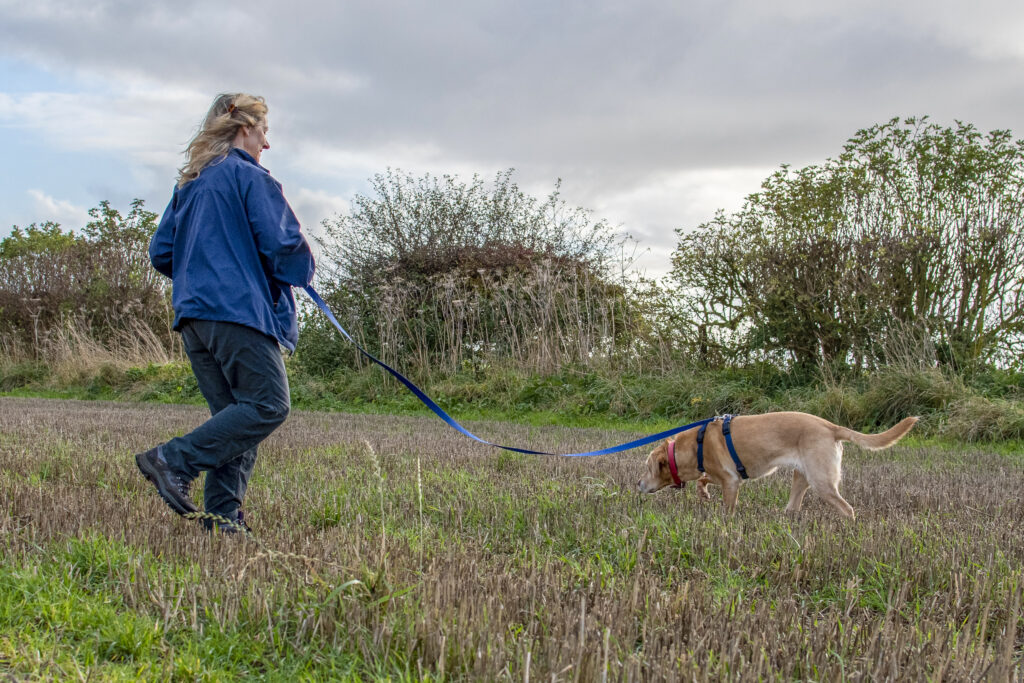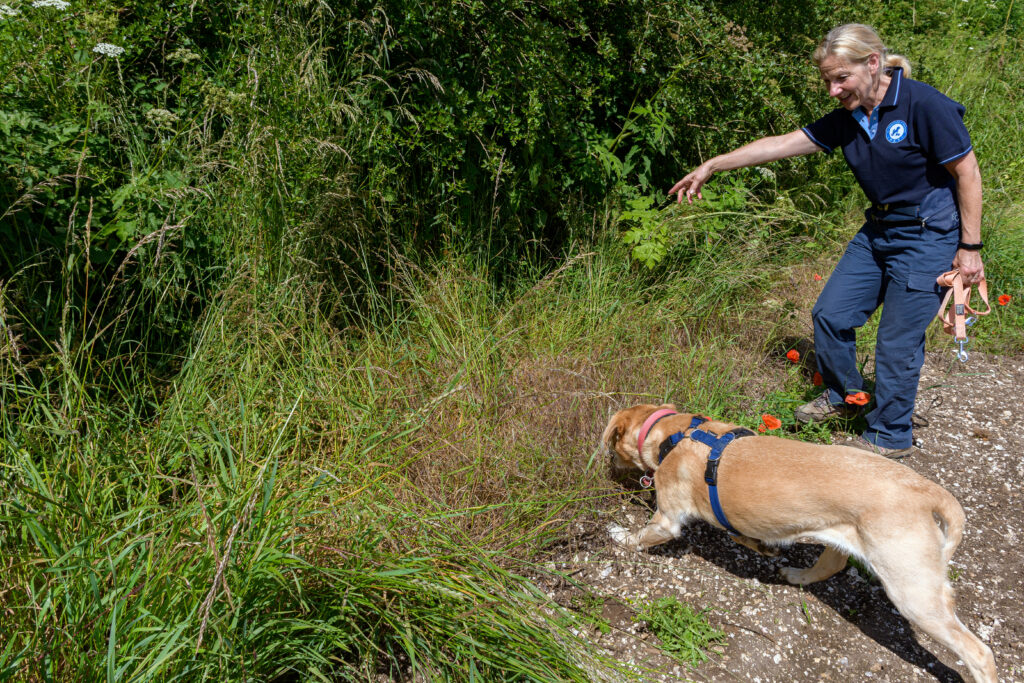Recall Training
 Pic 1. Recall Training with a longline lead © Caroline Clark
Pic 1. Recall Training with a longline lead © Caroline ClarkThe reason that a number of dogs run away and do not want to come back when called is because often the owner punishes the dog upon its eventual return. In addition to this they then refuse to allow them to run free for fear of them running off again. The result is that the dog has even less likelihood of wanting to return if they do get off the lead.
Another problem is that being outside is fun for a dog, with lots of interesting things to explore and sniff. Coming back to you is much less enjoyable!
The way we can help with these problems is to become the centre of their attention. This involves doing some training although there are a few things that we can integrate in to our daily routines so it shouldn’t be a particularly time consuming or arduous task.
Here are a few ideas:
- Before training a full recall it is important to teach your dog some basic cues first such as sit, stay. For dogs that already know these cues, work on polishing them up a little.
- A recall can be strengthened in the house and garden throughout the day for dinner time, treats and play. This means that whenever you call them (and they return) something good to happens.
- Even the garden has different sounds and smells so attaching a long house line, and letting it trail, (whilst you are there to supervise), can help back up the recall cue (approx. 2.5 meter long in the garden is usually long enough).
- Dogs with a high sense of smell or retrieval can be encouraged through games that involve finding objects that you have hidden. For example you can make them sit and wait whilst you drop a favourite toy in some undergrowth in the garden and then ask them to ‘find’ or ‘seek’ (see Pic. 2) Most importantly make sure they gain a reward from bringing that item back. This can then extend to other places outdoors once they know the drill.
- Gradually you can increase the number of distractions – but don’t begin in places where you know there are lots of things to distract them. I recommend hiring a private dog field where the environment is more controlled and safe. You can use a recall line there as a back-up. This saves you repeatedly calling them as you have the option to take hold of the line and back up the cue with a gentle tug.
- Don’t forget that it can be much more challenging outside on walks as there are lots of different scents and other doggy distractions – so it is unrealistic to expect them to return without doing lots of training in slightly more distracting places first and building up gradually.
- When your dog is returning consistently you can practice off lead/recall line.
- Have an idea about areas where you can almost guarantee losing your dog. For example sight hounds and terriers are likely to disappear if they catch sight or the smell of a rabbit. It’s not a good idea to attempt training in these kind of places and even once fully trained it’s a big ask for it to go well 100% of the time. Giving them a sense of freedom by using a long lead or recall line might be a better and safer approach!

Top Tips:
- Make sure all training is fun. Encourage them to want to come to you. Using an upbeat voice with open arms to guide them to you – with lots of praise and small but tasty treats helps your dog want to be with you and increases their compliance.
- When using food rewards remember that dogs that are hungry will be more motivated to return for food so do not feed them before training sessions.
- Whilst out on walks interact with your dog regularly through play and always have their favourite treats and toys (making this a special toy that they only get on walks).This way it becomes more highly valued.
- Finally remember to regularly call your dog to you throughout the walk, rewarding and letting them go off again. If you only call your dog at the end of the walk to put him/her back on the lead they will quickly learn that this signals the end of their enjoyment and they may be more reluctant to return.
- For a lovely video demonstration visit https://www.battersea.org.uk/pet-advice/dog-advice/how-teach-your-dog-recall.
Recommended Products:
I may receive commission when you click Amazon links on this page and make a purchase. However, this does not impact my recommendations, reviews or comparisons.


